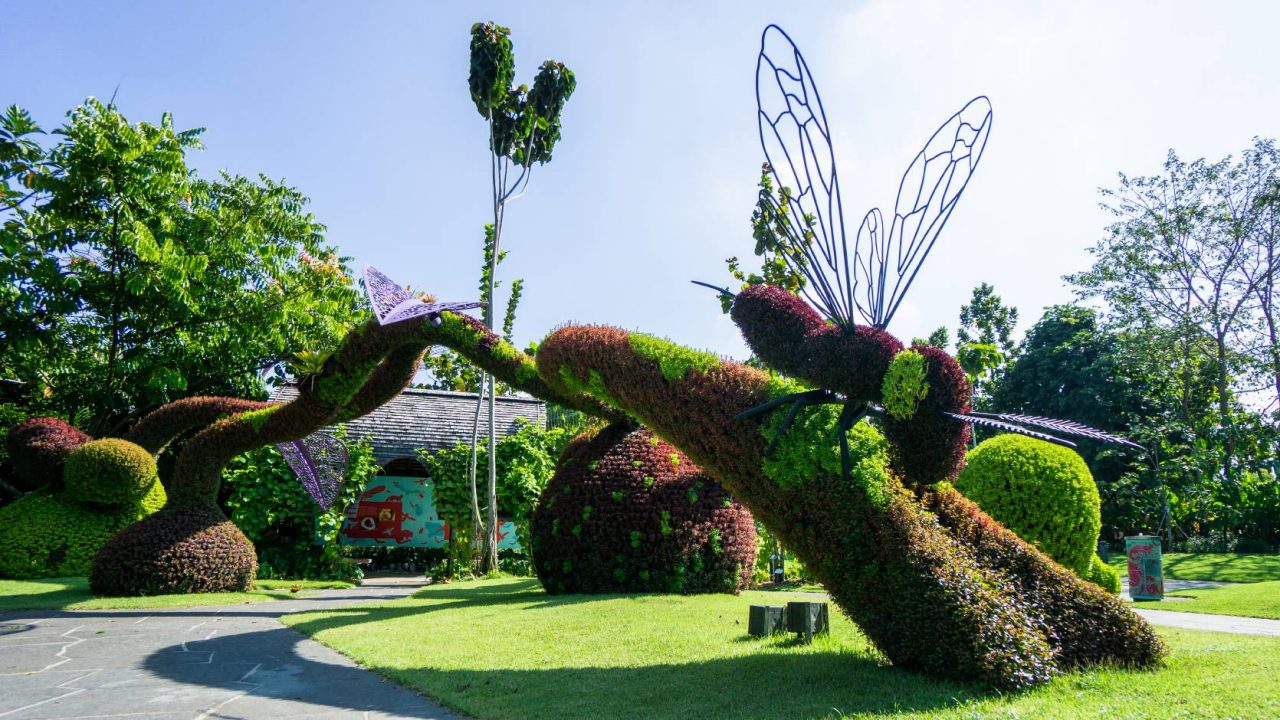World of Plants - Web of Life
Web of Life tells the story of the interdependent relationship between flora and fauna, in particular that of fig plants and the native animals that reside in the tropical rainforest. Explore this, as well as the symbiosis of other plants and animals at this pocket garden.


Elephant Ear Fig
The common name of this tree is derived from its large ovate leaves. New leaves are red at first and turn green as they mature. Huge, delicious figs form clusters on its trunk, larger branches and even on its exposed roots! Like all fig species, it relies on a very specific type of wasp for pollination and thus cannot reproduce where the wasp is absent.

Fijian Longan
The Fijian longan tree provides food and lodging for tree-dwelling ants in two stages. The young plant bears nectary glands on its new leaves to feed the ants while the lowest pair of leaflets in an adult plant wraps around the stem to provide a chamber for the ants to seek shelter in. In return, the ants protect the tree from other hungry herbivores!

Brazilian Dutchman’s Pipe
The large trumpet-shaped flower of this plant produces a foul odour that attracts flies to make their way into its alluring opening. This narrow passage is lined with downward-facing hairs that act as a fly-trap. While inside, pollen is deposited on the pollinators as the hairs subsequently wither and allow the flies to make their way out to pollinate other flowers.
Written by: Guan Zhifang, Senior Manager, (Festivals & Events, Programming)
Zhifang is an events planner by day. She believes that slowing down in this fast-paced world is anything but lazy, so let’s breathe and take the time to stop and smell the roses!



